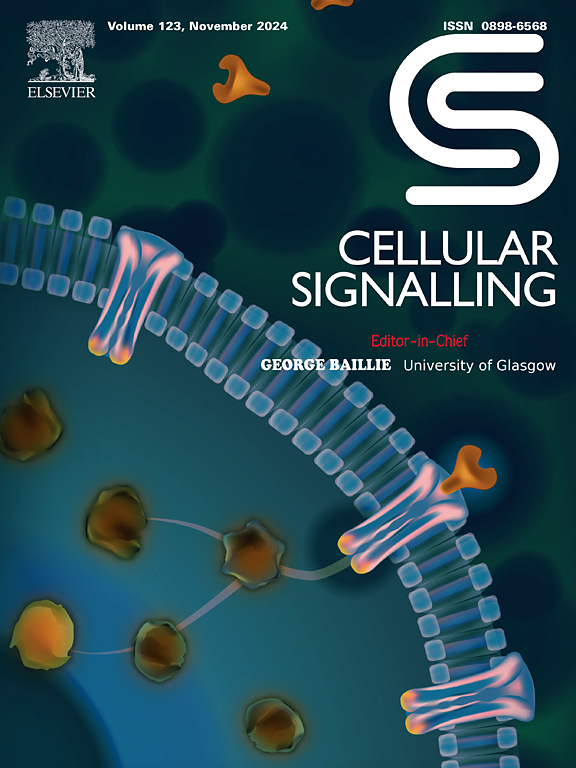ezh2高表达的卵巢癌细胞外囊泡通过诱导骨膜蛋白+成纤维细胞促进大网膜转移
IF 4.4
2区 生物学
Q2 CELL BIOLOGY
引用次数: 0
摘要
卵巢癌(OvCa)在最初诊断时的频繁大网膜转移是由于大网膜转移前微环境,其中富含活化的成纤维细胞。然而,驱动大网膜成纤维细胞表型转化并促进转移的分子事件在很大程度上仍未被探索。此前,我们发现zest homolog 2 (EZH2)的肿瘤增强子(tumor enhancer of zest homolog 2, EZH2)是一种催化H3K27位点三甲基化的关键表观遗传调控因子,在OvCa转移中起着至关重要的作用。在本研究中,我们发现来自ezh2 -高OvCa细胞的细胞外囊泡(EVs)诱导大网膜成纤维细胞表达Periostin (POSTN),而不是α-SMA,从而促进肿瘤转移。裸鼠肿瘤细胞接种前腹腔注射EVs,结果显示ezh2高表达卵巢癌细胞衍生的EVs促进大网膜转移。与ev共培养的人原代大网膜成纤维细胞,特别是来自ezh2 -高OvCa细胞的成纤维细胞,表现出增强的迁移和侵袭能力,ev激活成纤维细胞的条件培养基促进癌细胞的迁移、侵袭和增殖。这些结果可能为ezh2腹腔内扩散卵巢癌的靶向治疗提供新的见解。本文章由计算机程序翻译,如有差异,请以英文原文为准。
Extracellular vesicles derived from EZH2-high ovarian cancer cells facilitate omental metastasis by inducing Periostin+ fibroblasts
The frequent omental metastasis of ovarian cancer (OvCa) at initial diagnosis is due to the omental premetastatic microenvironment, which is rich in activated fibroblasts. However, the molecular events driving the phenotypic transformation of omental fibroblasts that favor metastasis remain largely unexplored. Previously, we found that tumoral enhancer of zest homolog 2 (EZH2), a key epigenetic regulator catalyzing trimethylation at H3K27, played a crucial role in OvCa metastasis. In this study, we revealed that extracellular vesicles (EVs) derived from EZH2-high OvCa cells induce the expression of Periostin (POSTN), but not α-SMA, in omental fibroblasts, facilitating tumor metastasis. Nude mice with intraperitoneal injection of EVs before tumor cell inoculation showed that EVs derived from EZH2-high ovarian cancer cells promote omental metastasis. Human primary omental fibroblasts cocultured with EVs, especially those derived from EZH2-high OvCa cells, exhibited boosted migration, invasion capacities and conditioned medium from EV-activated fibroblasts promotes cancer cell migration, invasion and proliferation. These results may provide novel insight into EZH2-targeted therapy for ovarian carcinoma with intraperitoneal dissemination.
求助全文
通过发布文献求助,成功后即可免费获取论文全文。
去求助
来源期刊

Cellular signalling
生物-细胞生物学
CiteScore
8.40
自引率
0.00%
发文量
250
审稿时长
27 days
期刊介绍:
Cellular Signalling publishes original research describing fundamental and clinical findings on the mechanisms, actions and structural components of cellular signalling systems in vitro and in vivo.
Cellular Signalling aims at full length research papers defining signalling systems ranging from microorganisms to cells, tissues and higher organisms.
 求助内容:
求助内容: 应助结果提醒方式:
应助结果提醒方式:


